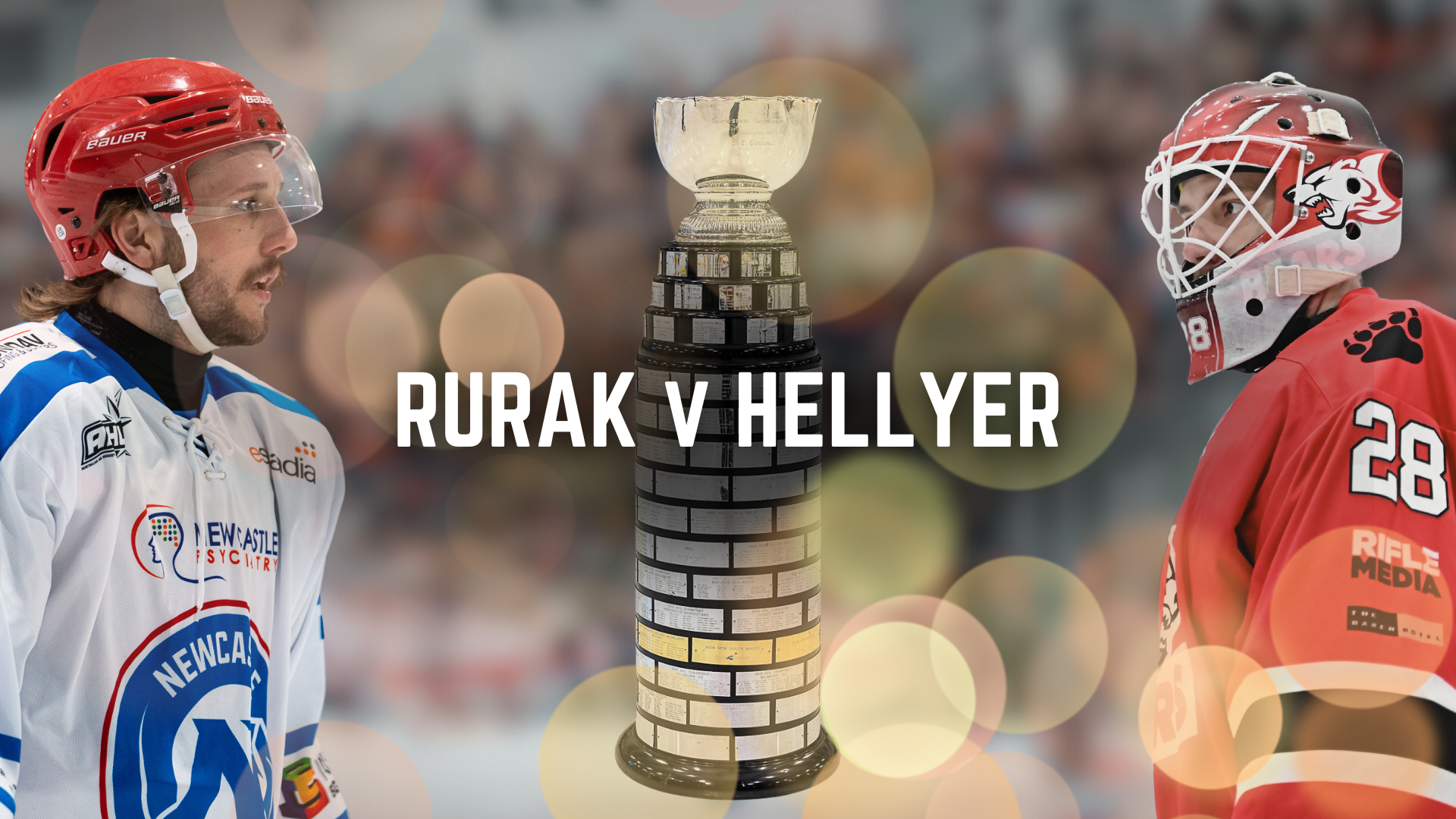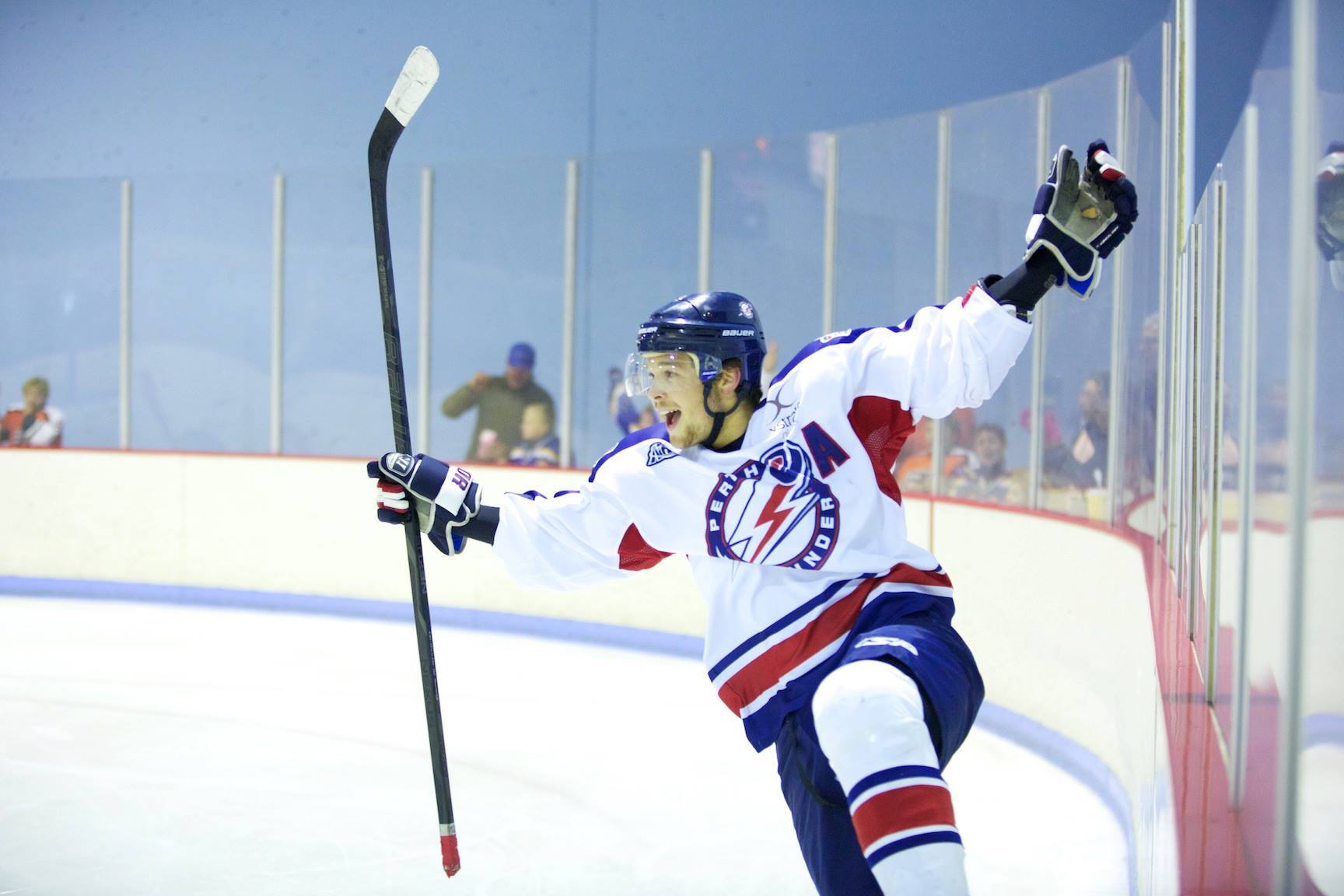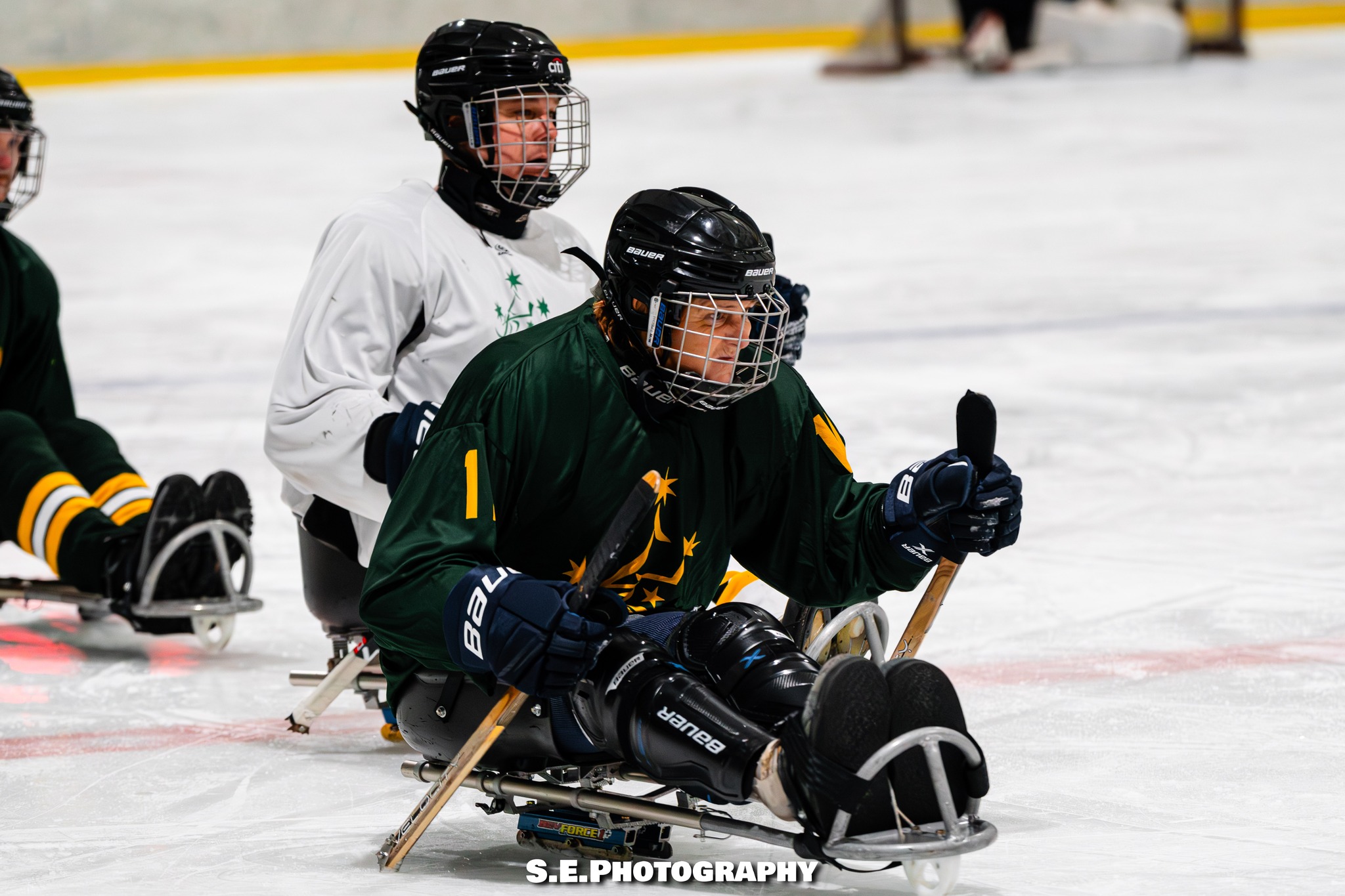The Australian Ice Hockey League (AIHL) established a two conference system prior to last season. As the 2024 regular season nears its conclusion, Hockey Hype Australia looks at the numbers to see which AIHL teams are benefitting the most.
Hockey Hype Australia published an article earlier this week examining what it will take for your favourite AIHL team to qualify for Finals. But how did your team get into its current position? The answer, in some cases, has plenty to do with the conference format.
Last season, 50 games took place between a Hellyer Conference team and a Rurak Conference opponent. Of the 150 AIHL competition points on offer, Hellyer teams pocketed 103 and Rurak teams earned 47.
Based on the stats, Hellyer teams secured 68.67% of the total point offerings from Rurak rivals. So, what has been the result this season when Hellyer teams battle Rurak teams?

2024 – The year of the ‘Hell Yeah’ Conference
Earlier this season, AIHL Head of Photography, Phil Taylor, referred to the Rurak Conference as the ‘R U Ok?’ Conference, and the Hellyer as the ‘Hell Yeah’ Conference. This is the most apt description we’ve heard to date.
Thus far, 61 games have been played between Hellyer and Rurak teams, with 183 points on offer. Hellyer teams have collected 130 of those points, leaving 53 to Rurak teams. That’s 71.04% of points heading to the Hellyer Conference.
This season has nine inter-conference games left. Based on the small number of games remaining, the current 71.04% Hellyer points rate shouldn’t fluctuate dramatically.
So, there remains a clear difference in quality between the two conferences. That conclusion is relatively unremarkable as team’s will naturally fluctuate in strength from season to season.
In fact, it would be more remarkable if there was absolute parity between the two conferences. Any league with a conference structure faces the same challenges.
However, an analysis of the data shows some teams are benefitting more than others from the conference format, with inflated or deflated point totals as a consequence.

Photo Credit: Phil Taylor
The methodology behind the madness
First, let’s compare each team’s total points percentage (dark blue), its points percentage within it’s own conference (orange, intra-conference), and its points percentage outside its conference (green, inter-conference). The conference differential bar (light blue) shows how much each team is benefitting from the conference format.
Basically, if the conference differential bar sits above zero, that team is benefitting from the conference format. If it sits below zero, that team is not benefitting from an easier conference format.
The length of the bar in either direction determines the amount of impact, positive or negative, the team is experiencing from the conference format. If you love charts, this section is for you. However, if you don’t love charts, there is a digestible analysis in the following section.


Analysis – which AIHL teams are benefitting?
From the charts above, each team in the Rurak Conference benefits from playing more games within its conference. However, it is notable that the Brisbane Lightning’s advantage is negligible.
Brisbane’s point percentage playing within its conference is 36.36%, and its point percentage is 36.11% playing outside its conference. So the ‘advantage’ is a mere 0.25%.
The other teams benefitting in the Rurak Conference in ascending order are the Canberra Brave (6.4%), Central Coast Rhinos (19.70%), Adelaide Adrenaline (28.72%), and Newcastle Northstars (43.51%).

Newcastle Northstars in a category of its own
The difference between the Newcastle Northstars’ record within and without its conference is astonishing. The Northstars are the bullies of the Rurak Conference, stealing other team’s lunch money at a 73.81% clip.
However, it’s a different story when Newcastle plays outside its conference. It’s being picked up by Hellyer opponents, turned upside down, and having its pockets emptied.
The Northstars’ inter-conference points percentage of 30.30% ranks eighth in the league, better than just the Central Coast Rhinos and Adelaide Adrenaline. In fact, the only team Newcastle has defeated in the Hellyer Conference this season is the last-placed Sydney Ice Dogs (twice).
That puts the points percentage differential, or advantage Newcastle has gained by being in the Rurak Conference as opposed to the Hellyer, at 43.51%. No other team in the league comes close to the Northstars in that regard.
Here’s a stat that doesn’t seem real – the Rurak Conference leading Northstars have not defeated a single team league-wide with a winning record. It’s astounding that a team has clinched a playoff spot with four weeks remaining in the regular season without beating a team over .500.
However, fret not Newcastle fans, that record could change as soon as this weekend in Melbourne with a win against the Ice. Or, if the Canberra Brave win in regulation in its next two games across two weekends, the Brave will have a record over .500, technically giving the Northstars three wins over a team with a winning record this season.

One of these Hellyer teams is not like the others
In the Hellyer Conference, only one team has a better record playing within its own conference – the league leading Sydney Bears. Its points percentage outside the conference of 79.49% increases to 88.89% within the conference.
However, that number makes sense when considering the Bears don’t need to play the best team within the conference and league – itself.
Dropping just four points in intra-conference play, all to the second-placed Melbourne Ice, the Bears have dropped eight points outside the conference.
Those points went to the Canberra Brave (3), Adelaide Adrenaline (3), and Central Coast Rhinos (2). Although it did take arguably the greatest goaltending performance of the past two decades in one of those instances.
Analysis – which AIHL teams are less fortunate?
Four teams statistically are adversely affected by the current format, and all of those teams are in the Hellyer Conference. In ascending order of adverse affects they are Perth Thunder (-17.69%), Sydney Ice Dogs (-29.04%), Melbourne Ice (-29.60%), and Melbourne Mustangs (-29.84%)
Illustrating the statistical difference in quality between conferences, the Sydney Ice Dogs have the lowest inter-conference points percentage among Hellyer Teams – 48.48%. To put that number in context, that is a higher inter-conference points percentage than any Rurak team. The Canberra Brave are tops in Rurak with a 43.59% inter-conference points percentage.
This does not mean that if the Ice Dogs were in the Rurak Conference that they would be in top spot. What it does indicate though is that if the Ice Dogs were in the Rurak Conference and its points were adjusted based on schedule difficulty, they could have a few more points than their current total of 23, replacing the Brisbane Lightning who are currently in the third and final playoff spot with 25.

What does it all mean?
The empirical data reflects widespread anecdotal opinions – the Hellyer Conference is the stronger of the two conferences.
In the Rurak, four teams are clearly benefitting from playing slightly more games within their conference. Each AIHL team plays 16 games against conference opponents, and 14 games against non-conference opponents. Correspondingly, four teams in the Hellyer are adversely affected from playing more intra-conference games.
An objective outsider could argue that the top-two teams from each conference should automatically qualify for Finals, and be joined by two ‘wild-card’ teams with the next best records regardless of conference. However, these decisions are not made by objective outsiders, and it would be surprising if we see a change anytime soon.
As Finals format is voted on by team representatives, Rurak officials would currently be voting against self-interest to support anything other than a 50/50 split Finals rendition. And, in the future, when the Rurak Conference becomes the stronger of the two, Hellyer representatives will similarly vote for a 50/50 split.
In summation, the data can inform which team records are artificially inflated or deflated heading into Finals. The H Newman Reid trophy for minor premiers is already guaranteed to go to a Hellyer team.
Statistically, the Goodall Cup will likely also go to a Hellyer Conference team. However, games aren’t played on a spreadsheet, and all it takes is a Liam Hughes-esque performance across two or three games to buck the odds.




One response to “Comparing Conferences – Which AIHL teams are impacted the most”
[…] Comparing Conferences – Which AIHL teams are impacted the most by Gordon Goodenough (Hockey Hype Australia, 19 July 2024) […]